#native american women warriors
Explore tagged Tumblr posts
Video
Members of the Native American Women Warriors, a Pueblo, Colorado-based association of active and retired American Indians in U.S. military service, at a Colorado Springs Native American Inter Tribal Powwow and festival in that central Colorado city (LOC) by The Library of Congress Via Flickr: Highsmith, Carol M.,, 1946-, photographer. Members of the Native American Women Warriors, a Pueblo, Colorado-based association of active and retired American Indians in U.S. military service, at a Colorado Springs Native American Inter Tribal Powwow and festival in that central Colorado city 2015-07-18. 1 photograph : digital, tiff file, color. Notes: Title, date and keywords based on information provided by the photographer. Left to right, all U.S. Army: Capt. Calley Cloud, a Crow, based at Fort Riley, Kansas; Spc. Krissy Quinones Cloud, Crow, Fort Carson, Colorado; Retired Sfc. Mitchelene BigMan, Crow, the group's president and founder; and Sgt. Lisa Marshall, Cheyenne River Sioux, Fort Carson. The event was organized by the Palmer Lake, Colorado, Historical Society and One Nation Walking Together, a nonprofit organization addressing the needs of American Indians on reservations and living in urban areas. The women's patch honors Pfc. Lori Ann Piestewa, the first Native American woman in U.S. service killed in combat (in 2003 during Operation Iraqi Freedom). Credit line: Gates Frontiers Fund Colorado Collection within the Carol M. Highsmith Archive, Library of Congress, Prints and Photographs Division. Gift; Gates Frontiers Fund; 2015; (DLC/PP-2015:068). Forms part of: Gates Frontiers Fund Colorado Collection within the Carol M. Highsmith Archive. Subjects: America--American Indians--Native Americans--Pow wows--One Nation Walking Together--Calley Cloud--Krissy Quinones Cloud--Mitchelene Bigman--Lisa Marshall--Native American Women Warriors United States--Colorado--Colorado Springs. Format: Digital photographs--Color--2010-2020. Rights Info: No known restrictions on publication. Repository: Library of Congress, Prints and Photographs Division, Washington, D.C. 20540 USA, hdl.loc.gov/loc.pnp/pp.print Part Of: Highsmith, Carol M., 1946- Carol M. Highsmith Archive. (DLC) 00650024 Higher resolution image is available (Persistent URL): hdl.loc.gov/loc.pnp/highsm.33447 Call Number: LC-DIG-highsm- 33447
#Library of Congress#dc:identifier=http://hdl.loc.gov/loc.pnp/highsm.33447#carol m. highsmith#america#colorado#colorado springs#american indians#native americans#powwows#one nation walking together#calley cloud#krissy quinones cloud#mitchelene bigman#lisa marshall#native american women warriors#United States#flickr
1 note
·
View note
Text

"Women participated in war, an aspect of life that may be classified as political. Father Peter De Smet, the famous Jesuit missionary, recorded that Flathead women served as assistants in warfare: they retrieved arrows and intervened in the battle if a relative’s life was endangered. Point said of women’s battle role:
Several women rivaled the bravest of the men in courage. In the midst of the fray an elderly woman, hatchet in hand, hurled herself so violently between her son, whose horse was tiring, and a Crow on the point of reaching him, that the pursuer, despite his giant stature, judged it prudent to move away. Another younger woman went about on the battlefield gathering up arrows for those of her warriors who had run out of them. Another, who had advanced too far in pursuit of the enemy, made such a swift about face, at the very moment several arms were outstretched to grab her, that she galloped back to her own lines leaving the enemy stupefied. Still another, after having spent some time pursuing several Crows, returned saying, “I thought these great talkers were men, but I was wrong. They are not even worth pursuing.”
Point further mentioned a female warrior in passing: “All the Pend d’Oreilles warriors rode out, led by Kuiliy, a young Pend d’Oreilles woman renowned for intrepidity on the field of battle.” Unfortunately, he did not further describe this woman.
Another warrior woman was Colestah, wife to Chief Kamiakin, who participated in the Battle of Four Lakes and Spokane Plain against Colonel George Wright in 1858. She armed herself with a stone war club and fought by her husband’s side. When Kamiakin was wounded, she rescued him and - being a medicine woman - used her healing skills to cure him. It is apparent that women had the option of becoming not only assistants in warfare but warriors in their own right, either regularly or on an occasional basis. Plateau women apparently took part in peacetime politics as well as war. “It is no rare occurrence to see a woman step in during council and severely upbraid the chief”.
Before Plateau people were restricted to reservations, a few women participated in warfare on a voluntary basis, sometimes in defense. While under siege from the Assiniboine, a Flathead woman ran out of a besieged tent with a pistol and shot an attacker dead. Southern Okanogan women and children retired behind barricades during raids on the village. If an enemy approached too closely, a woman “with much power” (spiritual) seized weapons and fought even if menstruating. Her guardian spirit protected her and made her strong. Under such circumstances, a woman could touch weapons and retain the enemy weapons she had captured.
Traditions of warrior women were collected in 1980 on the Colville Reservation. Emily Peone, a granddaughter of the great Chief Moses of the Moses-Columbia, narrated:
Women fought in battles; went out with war parties. My mother’s father took his younger wife along. She dressed herself in her finest clothes so that if she died, she would be wearing her funeral clothes; they wouldn’t have to dress her. Women used a club on enemies, and lances too. They took stuff along to dress wounds. They helped the wounded and rescued men in trouble. Chief Moses was always noticeable by his fine clothes in battle. So his sister-in-law saw him fall in the fighting. She galloped to him and chased away his attacker. Then she fixed his wound. These were brave women. The warriors on the other side would kill women.
The women who rode out with raiding parties were distinguished from other women only by their great physical courage: they had no unusual social status. Consultants did not recall where they obtained their weapons and shields, but they carried them. Since female combatants were as likely to be killed or captured as a male, they were prepared to fight. Most women saw their function as helping the wounded and rescuing men in danger, as in the narrative above. In the course of these activities, however, they did not hesitate to kill opposing warriors if the opportunity arose.
A few women participated as warriors completely, as recorded by early missionaries in the area. Such full female warriors were not remembered on the Colville Reservation, but a female Nez Perce from Idaho participated in the war against the Euro-Americans. She was able to do so over the objections of her husband and two young children, indicating the extent of the autonomy that Plateau women exercised."
A necessary balance, gender and power among Indians of the Columbia Plateau, Lillian A. Ackerman
#history#women in history#women's history#historyedit#19th century#warrior women#women warriors#native americans#first nations#indigenous history#american history#colestah#kuilix
113 notes
·
View notes
Text

Ozaawindib is such an interesting chief, it’s a shame that we don’t have any depictions of her!
💛🏳️⚧️💛
#history#ozaawindib#ojibwe#lgbt#agokwa#native american history#historical figures#1700s#1800s#michigan#lgbt history#transgender women#united states#chief#indigenous peoples day#trans icons#mississippi river#womens history#native americans#transgender#lgbtq#henry rowe schoolcraft#american history#warrior woman#girl power#indigenous americans#historical women#nickys facts
21 notes
·
View notes
Text

Brave Fox and the Jake Black Gang, Part 14
As the kayoed Nate slowly came to, he found he had been securely bound by Brave Fox, and his face forced to lean forward into the buckskin material of the young woman’s belted knee-length dress while she stood either side of him and gagged him tightly. Charlie looked on in horror at this humiliation of his friend by the female warrior, but his angry protests just sounded like one anguished cry of “Mmmmmppppphhh!! as his threats and promises of revenge were muffled by the gag covering his mouth.
“You boys wait here and enjoy the evening air,” Brave Fox smiled, “I will be right back once I’ve discovered if your boss wants to come quietly, like.” The female brave’s prisoners looked on helplessly as Brave Fox left them, padding out of the forest grove on silent moccasined feet.
To be continued.
#harold bear art#men in trouble#men tied up by women#brave fox#western tales#native american female warrior#adventure
28 notes
·
View notes
Text
“This is the villain who betrayed our tribe, father!” cried Pocahontas, dragging the frightened and fearful Chesmu into the clearing by the rope that bound him. “Not Captain John Smith! You must release my lover and make this cur suffer your justice!”
AI video created via Hailuo.
#strong women#female native american warrior#pocahontas#man captured by woman#female victory#female dominance
5 notes
·
View notes
Text

The magnificent Firehair in action on the front cover of an issue of Rangers Comics.
Source: comicbookplus
#women in comics#golden age of comics#golden age comic book heroines#female western heroines#female native american warrior#firehair#rangers comics
4 notes
·
View notes
Text
I am reminded of this historical fiction podcast I was trying to get into and this character was introduced as "having above the shoulder length hair so she could help birth calves and dig holes, unlike the other women in town who had long hair and were holding on to their femininity despite the harsh living conditions"
Like, brother, have you ever had a bob? A '"boy cut" will keep hair out of your eyes sure, but a bob? Long hair is easier to manage for one-off physically demanding tasks because you can tie it back comfortably. Anything that grows between your brows and your shoulders is going to get in your eyes and mouth any you aren't able to pull it back with a ribbon. you could use a head covering, but at that point you might as well keep your hair long. Just say she had a bob and was a bit quirky. It's ok
#it was a white woman character i don't know if it's different for different hair textures#the fact that ancient warriors would have longer hair to sit in their helmets is cool#native americans generally having long hair is also so cool#the main problem with long hair is brushing and washing not it getting in the way of birthing cows#i'm bitter and I couldn't finish the podcast I thought it was so dumb :p#podcast#hair#Idk fashion and hair politics is craaazy#why must everything be complicated ahhh#fashion#women
2 notes
·
View notes
Link
War of the Territories preview by gordh13
#warrior#warrior women#native#native female#native american#native canadian#native canadian female#story#fiction
0 notes
Text
How the Native Americans took over Alcatraz
Today’s Lest You Forget Series is about the Native American Resistance and Women Native American Warriors. Lisa Skinner discusses how the Native American Population dwindled from millions to 238,000 from wars and raids. Lisa discussed the Little Bighorn battle on June 25th, 1876, and how the Native Americans took over Alcatraz on November 20th,1969. Alcatraz Island, San Francisco, California…

View On WordPress
#Alcatraz Island#Anti Semitism#Betsy Wurzel#Familes Grieving#Lillian Cauldwell#Lisa Skinner#Native American Indianes#Racism#Warriors#Women Native American Warriors
1 note
·
View note
Text
Organizations To Help Indigenous People
I've been reblogging three separate posts for a while now and I thought I'd combine them all into one for maximum ease. Please reblog this list and help these organizations if you can!
Warrior Women Project
Sitting Bull College
First Nations COVID-19 Response Fund
The Redhawk Native American Art Council
Partnership With Native Americans
Native American Heritage Association
National Indigenous Women's Resource Center
Indigenous Women Rising (abortion access fund)
Indian Residential School Survivor’s Society
Stop Line 3
Honor The Earth
The Lakota People’s Law Project
Amazon Frontlines
‘Āina Momona
The Native Wellness Institute
The Native Americans Rights Fund
National Centre for Truth and Reconciliation/University of Manitoba
First Nations Child & Family Caring Society
Native Women's Association of Canada
Indspire
Mi'kmaw Native Friendship Centre
Micmac Benevolent Society
Mawita'mk
Advancing Indigenous People In STEM
Community Outreach and Patient Empowerment
The Association on American Indian Affairs
First Nations Development Institute
American Indian College Fund
Diné Citizens Against Ruining Our Environment (CARE)
Hopa Mountain
Indigenous Values Initiative
Native American Disability Law Center
People’s Partner for Community Development
If anyone has links to other organizations that help indigenous people, please feel free to add them!
#indigenous people#native americans#native canadians#indigenous organizations#support indigenous people#support native people#signal boost#for a good cause#please reblog#please help#please share#please donate
549 notes
·
View notes
Text

Brave Fox and the Jake Black Gang, Part 18
Less than half an hour later, Brave Fox, once again astride her faithful Moonflower, had Charlie, Zeke and Nate on their feet, but with their hands and arms still bound and gags in place. The humiliated but depressed and unresisting outlaws miserably accepted their fate as the young Dakota warrior slipped nooses of rope around their necks, tethering them to each other, and Charlie who was tied to Moonflower’s saddle horn. The grimly triumphant warrior woman, Winchester in hand and the sacks of plundered loot from the Silver Creek Great Western bank strapped to her steed behind her, urged her reluctant cavalcade of prisoners forward. “Get going, boys!” she ordered.
In front of her trotted the wounded, broken and naked figure of Jake Black - a shadow of the desperado who had terrorised the town and murdered its sheriff. Hands bound behind him, and tied to Moonflower’s bridle, the defeated former Confederate guerrilla sobbed quietly to himself, scarcely able to believe his mighty gang of veterans had been brought low by a single squaw.
To be continued.
#harold bear art#men in trouble#men tied up by women#brave fox#western tales#native american female warrior
9 notes
·
View notes
Text
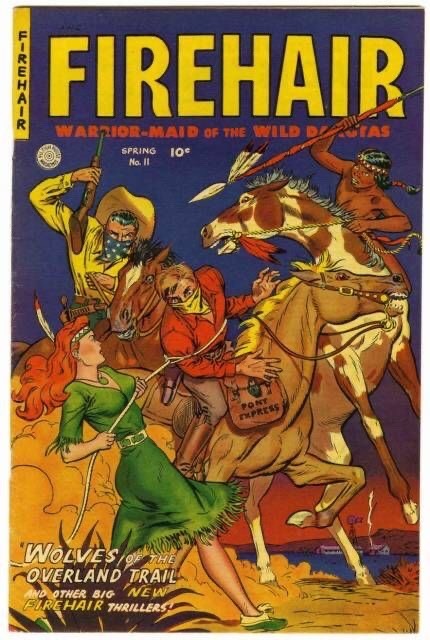
Firehair will make frequent appearances in this blog, being one of the strongest and most uncompromising heroines of the Golden Age. The character featured prominently in Rangers Comics and eventually got her own title, Firehair, Warrior-Maid of the Wild Dakotas, and her adventures ran from 1945 to 1952. Firehair was a red headed white woman, named Lynn Cabot, whose wealthy parents headed west from Philadelphia to deliver a shipment of arms to the western township of Plainsville. Ambushed by apparently hostile Native American warriors (who were in fact renegade white men in disguise - a common storyline in the title) and left for dead along with her murdered mother and father, the young Lynn is rescued by the benevolent Dakota Sioux who raise the girl as one of their own, naming her “Firehair” after her distinctive red locks. Initially unable to remember her former life, Firehair embraces the life of the Dakotas with enthusiasm, but refuses to accept the restrictions of being an “Indian squaw” and soon excels at horse riding, roping, archery and hunting, frequently putting the braves to shame. Eventually Firehair’s memory returns, but despite being an heiress to her family fortune, Lynn elects to remain with the Dakotas, rapidly becoming a confidant of their wise chief, Tehema, and best friend to the young brave and Tehema’s son, Little Axe.
Firehair’s adventures involve defending her people against Native American enemies and crooked and exploitative white men. Usually clad in a well-fitting belted green buckskin dress, Firehair is as sensual as she is brave, but, although secretly longing for love, finds it forever denied her. Strong-willed, intelligent but sometimes reckless, the western heroine is highly skilled in unarmed combat and, frequently aided by the Dakotas, brings numerous villains, renegades, traitors and outlaws to justice. In truth, Firehair is of a piece with the numerous and contemporaneous Golden Age jungle woman comic book characters. She is white, beautiful, from a wealthy background and intent of defending what she views as a noble life from encroaching white settlers. She can rightly be accused of being a paternalistic figure in respect of the Native American tribespeople she fights with and against, but the title is free of the racism that often permeates the jungle girl genre, with the Native characters rarely portrayed as savage caricatures. Also, to the squaws of her tribe, she is a feminist role model, puncturing male pretensions and demonstrating daily, that she is indeed a warrior-maiden and the equal of any man.
Firehair first appeared in Rangers Comics #21 (February 1945) and featured in every issue until #65 (May 1952). Her own title lasted eleven issues from Winter 1948 until Spring 1952. The Firehair stories were usually well-plotted, often with a moral, and were written by John Starr, and illustrated by Lee Elias and Bob Lubbers. The cover above, featuring Firehair in typical combative style intercepting and capturing two male Pony Express robbers, and aided by Little Axe, is from Firehair #11 (Spring 1952).
All Firehair’s adventures can be found on comicbookplus, either in the original titles or in a five volume archive.
#firehair#female native american warrior#western tales#women in comics#strong woman#western comics#rangers comics#golden age of comics
15 notes
·
View notes
Text
For people who haven't read Gaiman's books...yeah. Neverwhere has an obvious author self insert (something something boring whinging white male who women inexplicably find incredibly attractive) who finds a magical injured teenage girl (she's fourteen) and it's such uncomfortably realistic grooming that I didn't even notice it until I read it again as an adult. Just. Oh yeah they're in a relationship by the end lol.
Sidebar he writes a female warrior in this same book and is constantly describing her "delicious caramel skin" or whatever and describes her breasts in her DEATH SCENE. His writing is so utterly masturbatory that I feel secondhand embarrassment that anyone would want this sort of thing published.
In American Gods, he has an entire digression from the plot to detail how the main character's cheating whore wife died in a car accident bc she was giving her affair partner a blow job. The MC is all coolly detached and only slightly sad about the death the narrative implies she deserved. This is shown as some kind of "grace" on his part btw.
That's not the worst part! The worst part is definitely the sexually aggressive teenaged native american girl (oh, sorry, "20sish", since calling her "barely legal" would be too obvious) who keeps throwing herself all over the adult male protag (he's 32) for no reason. Ofc the epilogue implies the protag is stalking her and giving her flowers to pursue a relationship...how sweet. I could mention how basically every other female character is just fodder for sexual violence and shock value, but honestly, it's the background radiation of all of his work. A deep-seated, cynical amusement that women pretend to be anything more than sex toys and whores, which ofc the author espouses again and again is a woman's true nature. He is a liberal misogynist through and through.
This, of course, doesn't even touch upon the homophobia, but I've seen that discussed far more often than the truly vile misogyny openly on display whenever Gaiman picks up a pen.
71 notes
·
View notes
Photo
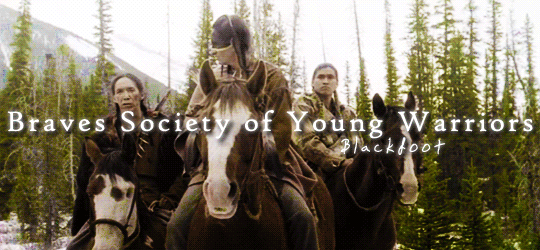

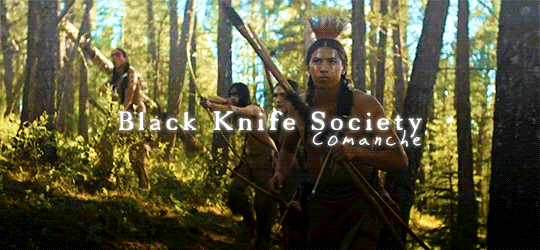

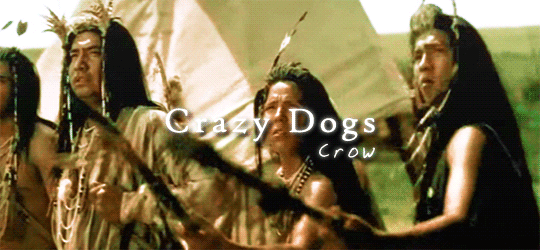
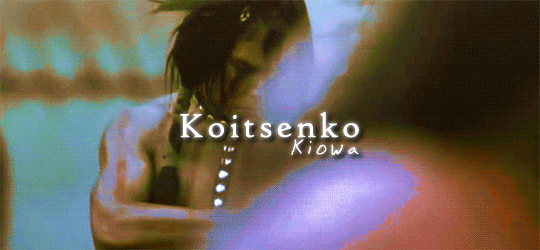


[image description: gifs stacked vertically of Native American warriors of various tribes, in traditional attire and in the fashion of their tribe. Text overlays on top of each gif, labeled, in order: “Brave’s society of Young Warriors, Blackfoot.”, “Women Warrior’s Society, Cheyenne.”, “Black Knife Society, Comanche.”, “Okichitaw, Cree.”, “Crazy Dogs, Crow.”, “Koitsenko, Kiowa.”, “Kit Fox Society, Lakota.”, “Iruska, Pawnee.”. end image description.]
Plains Native American Warrior Societies
(not an exhaustive list)
#historyedit#history#native american#plains native#plains indian#ndn#indigenous#native american history#first nations history#american history#canadian history#justin's edits
448 notes
·
View notes
Text
it's once again the time to yap to strangers online to distract myself from the fact that i should be studying for 2 latin exams, 3 italian exams, and the 1 italian test i have to take again
and i will yap about american primeval because i'm still OBSESSED with the series, and also i'm a huge nerd for the native american history
did y'all know that derek hinkey, the man who portrayed red feather, is a descendant of the native americans this happened to? like, if you don't know yet (but i also don't wanna spoil), american primeval focuses on events surrounding the mountain meadows massacre. basically back in 1857 this baker-fancher party was just trying to get to california, and they ended up camping in this place called mountain meadows in utah. they were minding their own business, but the mormons there were already a lil nervous cus they thought the us government was coming for them (the whole utah war thing). and like the mormons lowkey ambushed the party. mormons were insane and i think we need to remember about it.
anyway, the role of the native americans, especially the paiutes, in the mountain meadows massacre is super important cus initially the mormon militia tried to pin the whole thing on the paiutes. but over time it became clear that while some paiutes were involved, they were influenced by the mormons aka used as the scapegoat. once again, the mormons were insane and we need to remember about it. the natives were in quite a pickle i'd say, manipulated by the mormons and then blamed for something that wasn't their doing. it's an example of how indigenous people were often exploited and misrepresented in history.
and derek hinkey, american primeval's red feather, is a direct descendant of the war chief numaga of the paiute tribe. while numaga didn't take part in the mountain meadows massacre, i think he's a very cool historical figure worth mentioning. he played a big part in the pyramid lake war. despite being big on peace and all that, his breaking point was when two paiute women were kidnapped and sexually assaulted by white men. the paiute warriors saved their women, dealt with the white men, and destroyed the williams station. highkey badass.
oh and i found this information that numaga once lied face down for three days to symbolize the suffering his people were bound to endure. don't know if this is true though.
and he died of tuberculosis.
26 notes
·
View notes
Link
War of the Territories by gordh13
0 notes